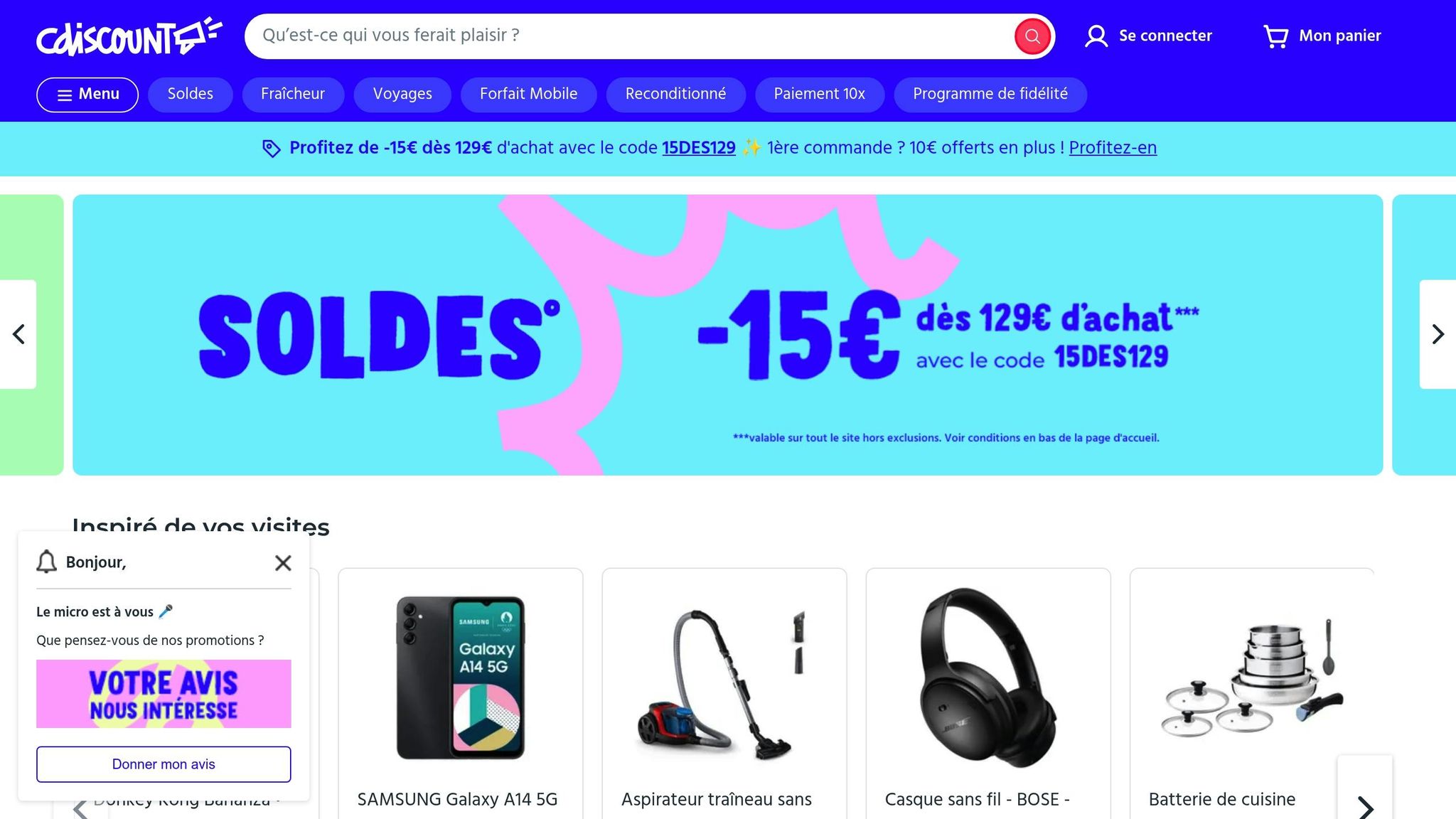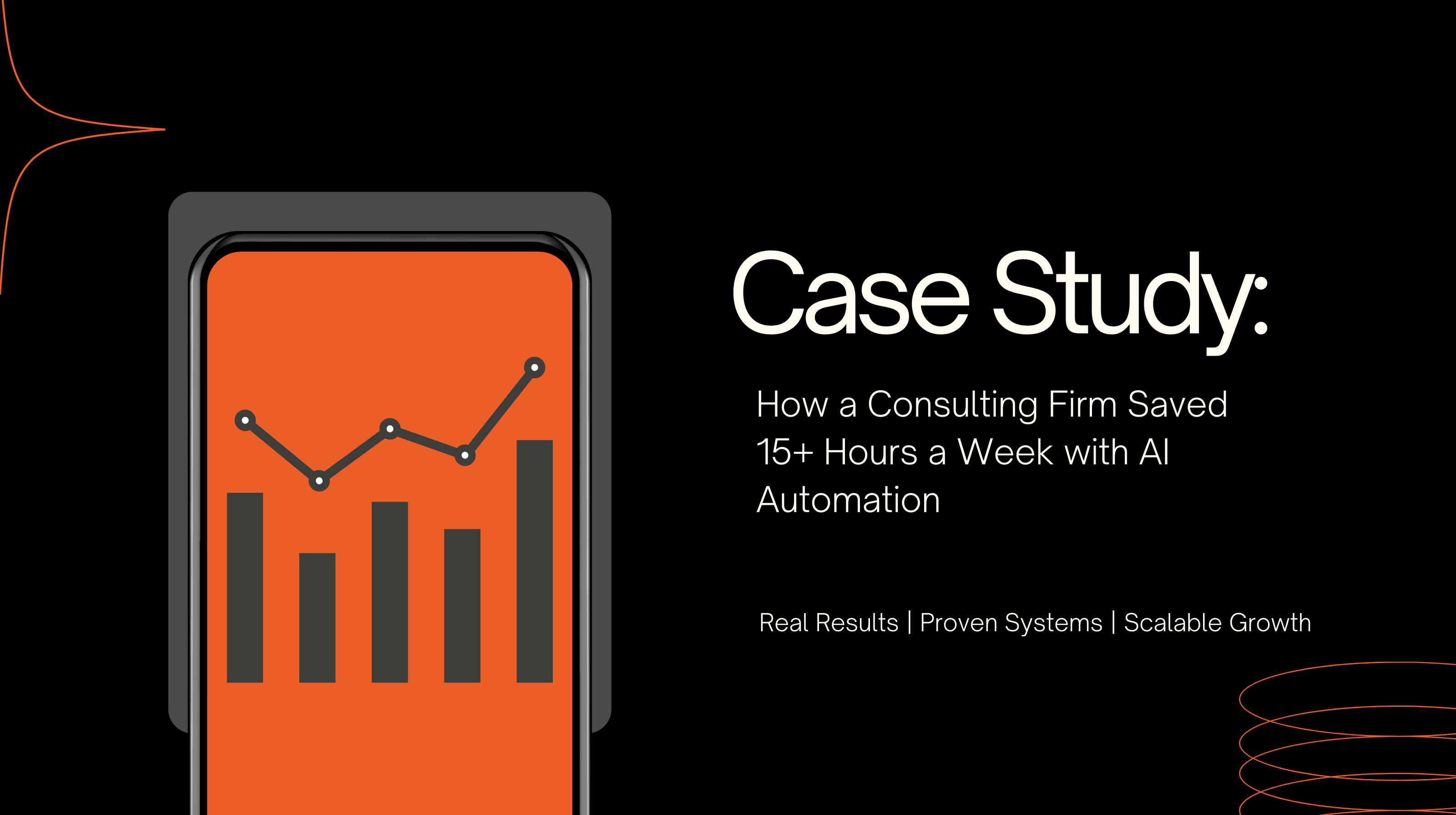AI chatbots are reshaping e-commerce by improving customer interactions and business operations. They handle 79% of customer inquiries, boost satisfaction by 30%, and save U.S. shoppers up to $11 billion annually. Businesses using AI chatbots report a 6x increase in service efficiency, a 40x ROI, and a 25% cost reduction. Key examples include:
These cases highlight how AI chatbots can drive better customer experiences, streamline operations, and boost revenue for e-commerce businesses.
[Case Study] BloomsyBox: Personalized eCommerce Chatbot using Generative AI

Case Study: BloomsyBox – Personalized AI Customer Engagement
BloomsyBox, a flower subscription service, took a fresh approach to customer engagement for Mother's Day by introducing a generative AI chatbot. This initiative, created in collaboration with Master of Code Global and Infobip, aimed to make the holiday experience more interactive and meaningful.
The chatbot, available on Apple Messages for Business, utilized Master of Code Global's LLM Orchestration Framework Toolkit (LOFT), the OpenAI API, and Infobip Answers to deliver accurate, real-time responses. This combination of tools created a smooth and engaging experience for users, setting the stage for a highly memorable campaign.
Custom Greeting Cards Campaign
For Mother's Day, BloomsyBox introduced a fun and interactive quiz. Participants answered five daily questions, and the first 150 individuals with perfect scores won a free bouquet. But the experience didn’t end there - winners could use the chatbot's generative AI to create personalized greeting cards.
The integration of the greeting card feature into the chat was seamless. After earning their bouquet, winners described the message they wanted to convey, and the AI crafted a heartfelt, unique note. This feature added a personal touch to the campaign, making it even more special during a holiday focused on emotional connections. By blending creativity with technology, BloomsyBox strengthened its bond with customers.
Results and Business Impact
The campaign delivered impressive outcomes: 60% of participants completed the quiz, 28% achieved perfect scores, 38% of winners used the AI to create greeting cards, and an impressive 78% redeemed their prizes. These figures highlight how digital interactions, powered by AI, can translate into meaningful customer engagement and measurable business impact.
This case study showcases the potential of combining interactive activities with advanced AI tools to create memorable customer experiences, deepen brand loyalty, and drive real-world results.
Case Study: Shopify Sidekick – Store Management Optimization

While customer-focused campaigns like BloomsyBox's interactive initiatives aim to enhance user engagement, Shopify has taken a different route by using AI to simplify internal store management. Enter Shopify Sidekick, an AI assistant designed to make e-commerce store management more efficient. Launched in August 2024 as part of Shopify Magic, this generative AI tool has redefined how merchants handle everything from basic store setup to advanced operational tasks.
Unlike customer-facing chatbots, Sidekick acts as a business assistant integrated directly into the Shopify admin panel. Using natural language processing and machine learning, it understands merchant requests and executes tasks that previously required technical expertise or multiple steps.
This tool exemplifies the concept of declarative commerce: merchants simply state what they want, and the platform takes care of the rest. It’s particularly helpful for newcomers needing quick store setups and seasoned sellers looking to streamline their workflows.
Key Features for Retailers
Sidekick offers a wide range of capabilities, including content creation, theme customization, data analysis, and customer segmentation. It allows merchants to perform these tasks seamlessly through conversational commands.
Here’s what Sidekick can do
Efficiency Gains for Business Owners
The impact of Sidekick on daily operations has been game-changing. By completing tasks in under 3 seconds, the tool has improved efficiency by 40–60%.
Richard Nguyen, a CRO expert at PageFly, highlights its versatility:
"Shopify Sidekick proves most effective for new merchants seeking rapid store setup and experienced sellers wanting to automate repetitive tasks."
Merchants benefit from instant, accurate reports, enabling them to make timely adjustments to campaigns. The tool’s ease of use is another standout feature. While the learning curve is minimal, merchants get the best results by using specific prompts. For instance, instead of asking, "How do I increase sales?" a more effective command would be, "Create a 20% discount code for returning customers".
Cost savings also play a significant role. By automating tasks that once required hiring specialists or spending hours learning complex tools, merchants can redirect their time and resources toward growth opportunities. Best of all, Sidekick is included with all Shopify subscription plans at no extra cost.
Case Study: Cdiscount – Multilingual AI Customer Support

Cdiscount, a major e-commerce platform, attracts 20 million visitors every month and serves 8 million active customers. With a catalog of 80 million products spanning 2,500 categories, traditional chatbot solutions simply couldn't keep up.
In March 2023, Cdiscount introduced the iAdvize Copilot™ for Shoppers, a generative AI tool designed to provide round-the-clock, multilingual customer support. This solution aimed to handle the platform’s vast product range while keeping costs under control. The pilot marked a significant step toward achieving seamless support for a diverse customer base.
Antoine Pierart, Cdiscount's Director of Marketing & Customer Experience, outlined their ambitious goal:
"Our goal was to reconcile everything - create the ability to assist our customers across the entire product catalog, do so continuously, 7 days a week and 24 hours a day, and achieve this with a strong emphasis on quality and, of course, cost control."
Multilingual Chatbot Features
Unlike traditional decision-tree chatbots, this new AI solution uses generative technology to handle complex customer interactions naturally. It can process queries across Cdiscount’s enormous catalog and operate in multiple languages, ensuring a consistent experience for all users.
With 24/7 availability, customers no longer face frustrating wait times. The AI delivers instant assistance, tackling routine inquiries autonomously while allowing human agents to focus on more intricate issues. This balance improves efficiency and enhances the overall customer experience.
Outcomes and Measurable Results
The impact of these features was immediate and measurable. Within just two months, the AI chatbot delivered
Encouraged by these results, Cdiscount expanded the AI's reach to additional product categories, including televisions, laptops, and outdoor furniture.
Pierart shared his thoughts on the AI's success:
"The results are exciting. In just a few weeks, AI has been able to fully handle 40% of customer conversations. The conversion rate is the same as with a human advisor, and customer satisfaction surpasses that of all decision-tree chatbots. I'm convinced that generative AI will transform customer relations, and I'm delighted that, thanks to this partnership, Cdiscount is positioning itself today with a technology that will soon be indispensable."
This case study highlights how generative AI can help large-scale e-commerce platforms overcome scalability challenges. By delivering personalized, high-quality support to millions of users, Cdiscount has not only improved customer satisfaction but also managed to do so without significantly increasing operational costs.
sbb-itb-d7ea0c6
Case Study: Sephora and H&M – Personalized Retail Experiences
Sephora and H&M have taken retail personalization to new heights with AI-powered chatbots, delivering tailored recommendations and simplifying the shopping process.
Sephora: Beauty Shopping Experience
Sephora revolutionized the beauty shopping experience by introducing a suite of AI tools designed to enhance every step of the customer journey. Among their standout innovations are the Sephora Virtual Artist, Sephora Color Match, and the Sephora Reservation Assistant.
In late 2016, Sephora launched the Sephora Reservation Assistant on Facebook Messenger, making it easier for customers to book in-store makeup appointments. This chatbot streamlined the process, leading to an 11% increase in booking rates and simplifying the steps involved. Within two years, it became a go-to tool for many customers. Another game-changer was the Sephora Virtual Artist, which allowed users to virtually try on makeup using augmented reality. In just two years, the app recorded over 200 million shades tried on, drew 8.5 million visits, boosted conversion rates by 11%, and cut product returns by 30% .
For even more personalization, Sephora introduced Color Match, a feature that lets users point their camera at any image or face. The algorithm identifies shades and suggests matching products like lipstick or eye makeup from Sephora’s collection.
Mary Beth Laughton, Sephora's senior vice president of digital, highlighted the company's strategy:
"Our two new bots for Messenger offer enhanced ways for our clients to engage with Sephora by streamlining how they access relevant service and product information on their mobile devices... This allows us to provide richer, more varied conversations that ensure clients get exactly what they want out of the experience."
Sephora’s chatbot further elevated customer engagement by providing real-time, personalized makeup and skincare advice. The results speak volumes: customer engagement rose by 44%, autonomous inquiry handling reached 72%, and sales conversion increased by 25%. Impressively, the chatbot resolves over 75% of daily inquiries without human assistance, reducing response time to under 10 seconds.
These innovations demonstrate how AI can enhance both customer satisfaction and business outcomes.
H&M: Personalized Styling Recommendations
H&M approached personalization differently, focusing on styling and outfit creation with their chatbot on the Kik platform. Acting as a virtual stylist, the chatbot provides users with personalized fashion advice.
Through quick style questions, H&M’s chatbot curates outfits tailored to individual preferences and displays prices for immediate shopping. Customers can choose to "shop" or "save" items, redirecting them to H&M’s website for purchase.
What sets H&M apart is the social element. Customers can view and vote on outfits created by others, fostering a sense of community and making the shopping experience more interactive.
The results were impressive. H&M’s chatbot on Kik achieved an 86% engagement rate, with users spending an average of four minutes interacting with it. The chatbot also boasted a click-through rate of 8%, outperforming H&M’s email marketing campaigns, which had a click-through rate of just 2%.
Jörgen Andersson, H&M’s chief creative officer, shared his thoughts on the initiative:
"We are curious to explore how to showcase our fashion in new creative ways – and embrace the benefits of new technology – while staying true to our commitment to personal style."
Both Sephora and H&M demonstrate how AI-driven chatbots are reshaping retail, offering customers more personalized and engaging shopping experiences.
AI Chatbot Implementation Comparison
Drawing from detailed case studies, comparing these implementations sheds light on how AI chatbots can meet specific business goals and customer expectations. For U.S.-based e-commerce businesses, understanding these varied approaches is key to choosing the right strategy.
BloomsyBox showcased a campaign-focused chatbot that gamified Mother's Day interactions, creating personalized greeting cards for users.
Shopify Sidekick simplifies store management by providing reports, shipping updates, and growth strategies directly within the platform's admin panel.
Cdiscount focused on global accessibility by incorporating multilingual AI support, helping to expand its international reach.
Sephora and H&M leaned into advanced personalization: Sephora uses image recognition and booking tools, while H&M's chatbot offers styling advice and streamlines returns.
Here’s a breakdown of key metrics and strategies from these implementations:
Key Metrics Comparison Table
This comparison highlights several scaling strategies for U.S.-based businesses. Campaign-based scaling works well for seasonal promotions, while platform-wide integration suits businesses with diverse operational needs. Multi-channel deployment, backed by features like multilingual support, is ideal for established retailers aiming to reach broader audiences.
Sephora’s use of advanced AI demonstrates how automation can drive efficiency and reduce costs. For instance, chatbots typically save businesses between $0.50 and $0.70 per interaction, making them a cost-effective customer service solution.
The multilingual capabilities adopted by Cdiscount and H&M are increasingly crucial as U.S. companies expand into diverse markets. With 64% of AI-driven sales coming from first-time customers, these features can significantly enhance customer acquisition efforts.
Flexibility in integration also stands out as a key factor. Businesses excelling in AI-driven personalization generate 40% more revenue than those that don’t. This underscores the importance of adopting modular, scalable chatbot solutions that can adapt to evolving business needs.
Conclusion: Lessons for E-Commerce Leaders
Real-world examples highlight how tailored AI solutions can significantly enhance both customer satisfaction and revenue. For instance, during Black Friday 2024, AI chatbots increased conversion rates by 15%, while AI-powered voice agents slashed call costs by nearly 50%.
These outcomes point to three critical factors for success: aligning AI initiatives with business goals, ensuring seamless integration into existing workflows, and continuously improving systems based on performance data. A McKinsey study supports this, revealing that generative AI assistants helped agents resolve 14% more tickets per hour and reduced handling time by 9%. The key takeaway? Success stems from ongoing refinement rather than a one-and-done deployment.
Companies like Devcore exemplify this approach by designing custom AI systems to tackle inefficiencies. By identifying operational bottlenecks and developing targeted solutions, they help businesses streamline processes and achieve measurable results. Their strategy emphasizes integrating AI into current workflows and aligning it with specific revenue goals - ensuring both efficiency and profitability.
The cost of delaying AI adoption is steep. The businesses featured in these case studies didn’t wait for perfect solutions. Instead, they started small, implemented targeted AI applications, and scaled as they saw results. This proactive mindset underscores the immediate benefits of embracing AI. As Shopify’s Alex Pilon aptly noted:
"We're living through unprecedented technological change. … All the software development we did over the past 25 years is now accessible at your fingertips, in real time, to solve problems and boost efficiency."
In today’s fast-paced market, the edge goes to companies that act decisively on AI adoption, prioritizing customer experience and operational efficiency every step of the way.
FAQs
How do AI chatbots enhance customer satisfaction and engagement in e-commerce?
AI chatbots are transforming customer interactions in e-commerce by providing instant, around-the-clock support. This means customers can get assistance whenever they need it, no matter the time of day. These chatbots are capable of managing up to 79% of routine inquiries, which not only speeds up response times but also ensures shoppers feel heard and valued. On top of that, they create personalized shopping experiences by tailoring recommendations and solutions to individual preferences.
By simplifying communication and resolving issues swiftly, chatbots play a key role in building trust and loyalty. This strengthens customer relationships, boosts retention, and ultimately drives sales. Plus, by automating repetitive tasks, businesses can redirect their energy toward delivering outstanding service and scaling their operations more efficiently.
What are the main advantages of using AI chatbots for internal business operations, as demonstrated in the Shopify Sidekick case study?
AI chatbots, such as Shopify Sidekick, bring a host of benefits to internal business operations. They take the hassle out of repetitive tasks by automating them, which not only saves time but also cuts down on manual effort. Thanks to natural language processing, these chatbots can deliver tailored recommendations and insights, helping teams manage operations more effectively.
By breaking down complicated workflows and speeding up decision-making processes, AI chatbots boost productivity, allowing businesses to channel their energy into growth opportunities.
How can e-commerce businesses use multilingual AI chatbots to improve global customer support?
Boosting Global Customer Support with Multilingual AI Chatbots
E-commerce businesses looking to connect with a global audience can benefit greatly from using multilingual AI chatbots. These tools help provide personalized support to customers from different regions, breaking down language barriers and creating smoother interactions.
To make the most of these chatbots, it’s important to choose solutions that support multiple languages and train them using localized data. This ensures the conversations feel natural and resonate with the cultural context of each audience.
Deploying these chatbots across key customer touchpoints - like websites, mobile apps, and social media - creates a unified support experience. To keep the chatbot relevant and accurate, regular updates based on user feedback are essential. This not only enhances customer satisfaction but also helps businesses build deeper connections with customers worldwide.
{"@context":"https://schema.org","@type":"FAQPage","mainEntity":[{"@type":"Question","name":"How do AI chatbots enhance customer satisfaction and engagement in e-commerce?","acceptedAnswer":{"@type":"Answer","text":"<p>AI chatbots are transforming customer interactions in e-commerce by providing <strong>instant, around-the-clock support</strong>. This means customers can get assistance whenever they need it, no matter the time of day. These chatbots are capable of managing up to 79% of routine inquiries, which not only speeds up response times but also ensures shoppers feel heard and valued. On top of that, they create <strong>personalized shopping experiences</strong> by tailoring recommendations and solutions to individual preferences.</p> <p>By simplifying communication and resolving issues swiftly, chatbots play a key role in building <strong>trust and loyalty</strong>. This strengthens customer relationships, boosts retention, and ultimately drives sales. Plus, by automating repetitive tasks, businesses can redirect their energy toward delivering outstanding service and scaling their operations more efficiently.</p>"}},{"@type":"Question","name":"What are the main advantages of using AI chatbots for internal business operations, as demonstrated in the Shopify Sidekick case study?","acceptedAnswer":{"@type":"Answer","text":"<p>AI chatbots, such as Shopify Sidekick, bring a host of benefits to internal business operations. They take the hassle out of repetitive tasks by automating them, which not only saves time but also cuts down on manual effort. Thanks to <strong>natural language processing</strong>, these chatbots can deliver tailored recommendations and insights, helping teams manage operations more effectively.</p> <p>By breaking down complicated workflows and speeding up decision-making processes, AI chatbots boost productivity, allowing businesses to channel their energy into growth opportunities.</p>"}},{"@type":"Question","name":"How can e-commerce businesses use multilingual AI chatbots to improve global customer support?","acceptedAnswer":{"@type":"Answer","text":"<h2 id=\"boosting-global-customer-support-with-multilingual-ai-chatbots\" tabindex=\"-1\" class=\"sb h2-sbb-cls\">Boosting Global Customer Support with Multilingual AI Chatbots</h2> <p>E-commerce businesses looking to connect with a global audience can benefit greatly from using multilingual AI chatbots. These tools help provide personalized support to customers from different regions, breaking down language barriers and creating smoother interactions.</p> <p>To make the most of these chatbots, it’s important to choose solutions that support multiple languages and train them using localized data. This ensures the conversations feel natural and resonate with the cultural context of each audience.</p> <p>Deploying these chatbots across key customer touchpoints - like websites, mobile apps, and social media - creates a unified support experience. To keep the chatbot relevant and accurate, regular updates based on user feedback are essential. This not only enhances customer satisfaction but also helps businesses build deeper connections with customers worldwide.</p>"}}]}



